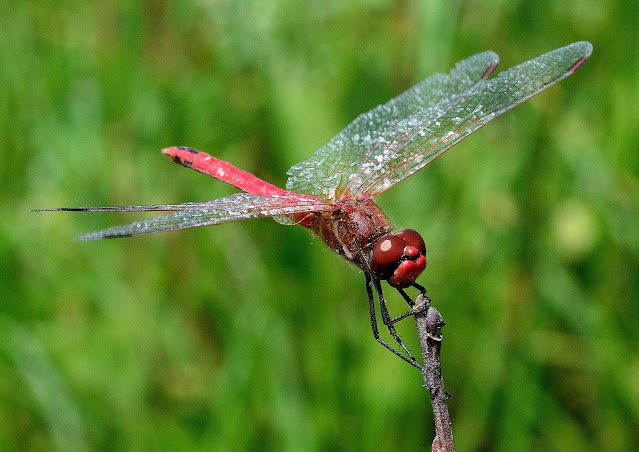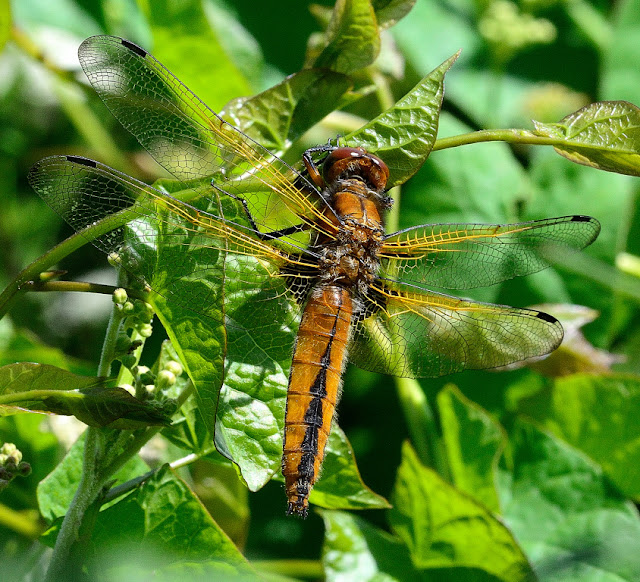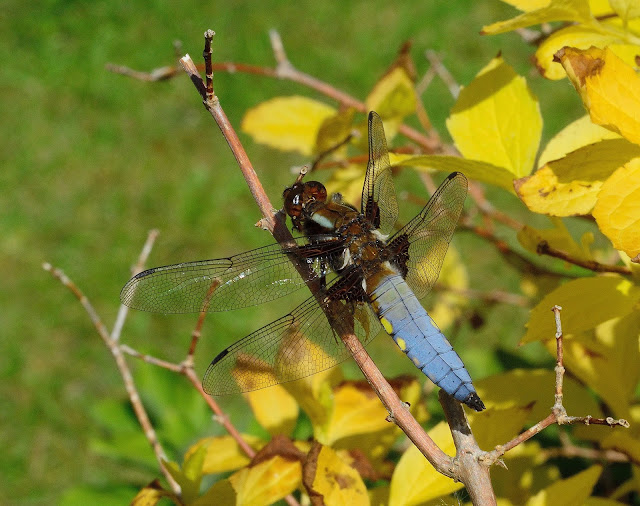The last entry in our Island resident species list describes the final three species. The large and impressive Golden-ringed Dragonfly is frequently seen on the Isle of Wight, in woodland rides and fields when immature, and along streams when mature. Territorial males will patrol up and down their breeding waterways while the female may be seen prodding her long needle-like ovipositor into the bed of shallow water while hovering in flight to deposit her eggs.
The Emperor Dragonfly is perhaps our largest dragonfly, and the male Emperor is unmistakable as he quarters any large pond. The female is a visitor to ponds large and small in order to lay her eggs.
The Migrant Hawker is a late summer hawker and seen here into October. It is usual to see this species in woodland rides hawking for insects well into the evening.























































